- EQUIPMENT
- special cranes
-
Industry Crane
-

Industry Crane
-

Tundish Cranes
-

Slab Cranes
-

Scrap Cranes
-

Billet Cranes
-

Coil,Bar and Plate Handling Cranes
-

Cement And Precast Crane
-

Power Station Crane
-

Ladle Cranes
-

Paper Industry Cranes
-

Waste to Energy Cranes and Biomass Cranes
-

Tailored Overhead Cranes for Aerospace: High Precision, Efficience, Safety and Reliability
-
-
Hoist & Winch Trolley
-

Casting Electric Wire Rope Hoist
-

European Model Electric Hoist
-

Explosion-proof Electric Hoist
-

Low-headroom Electric Hoist
-

Electric Chain Hoist
-

2 Types Explosion-Proof Electric Chain Hoists for Hazardous Zones: Gas & Dust Protection
-

2 Types Explosion-Proof Electric Wire Rope Hoists for Industrial Safety: Reliable Gas & Dust-Proof Solutions
-

Manual Hoists for Precision Lifting: Explore 3 Proven Types for Power-Free Operation
-
-
CRANE Spreader
-
Crane Electromagnetic Lifting Magnets
-

Lifting Electromagnet for Turning and Side Hung
-

Lifting Electromagnet for Thick Plate
-

Specialized Electromagnet for Lifting Steel Plates
-

Lifting Electromagnets for Lifting Steel Plates
-

Lifting Electromagnet for Heavy Rail and Profiled Steel
-

Lifting Electromagnet for High Speed Wier(Coiled Bar)
-

Lifting Electromagnet for Rebar and Steel Pipe
-

Lifting Electromagnet for Bundled Rebar and Profiled Steel
-

Lifting Electromagnet for Billet, Girder Billet and Slab
-

Lifting Electromagnet for Steel Scraps
-
- Crane Spreader
- Crane Lifting Tongs and Clamps
-
Crane Electromagnetic Lifting Magnets
- CRANE PARTS
- Transfer Cart
Professional Gantry Crane Operation Regulations: Essential Guide for Safe Operations
Table of Contents
In industrial production, the gantry crane, as a key lifting device, is widely used in logistics, manufacturing, and construction. To ensure safe and efficient gantry crane operation, operators must adhere to a series of strict operational guidelines and safety inspection processes. This article will detail the safety operating principles, pre-operation inspection points, and safety rules during operation for gantry cranes, aiming to provide practical guidance for operators to reduce the risk of accidents and ensure personal safety and equipment integrity. By comprehensively understanding these regulations, operators can not only enhance their professional skills but also make significant contributions to the safe production of their enterprises.

General Safety Gantry Crane Operating Principles
1. After passing inspection and review by the safety technology department, the gantry crane operator must undergo specialized training. After training and practical experience, they must pass a technical and safety operations exam. Only upon obtaining a certificate issued by the labor department can they operate independently.
2. Operators should understand the structure, performance, and working principles of the gantry crane. Regular safety inspections, maintenance, and lubrication of all major components must be conducted. They must be familiar with and strictly adhere to safety operating procedures to ensure safe gantry crane operation.
3. Operators must enter and exit the cab using a ladder; crossing over railings and carrying tools by hand is prohibited.
4. Each gantry crane should be equipped with the following items:
- Necessary tools for maintenance and repair of the gantry crane.
- Insulated gloves and insulated shoes.
- Safety ropes.
- Dry fire extinguishers.

5. The cab floor should be covered with rubber mats or other insulating materials.
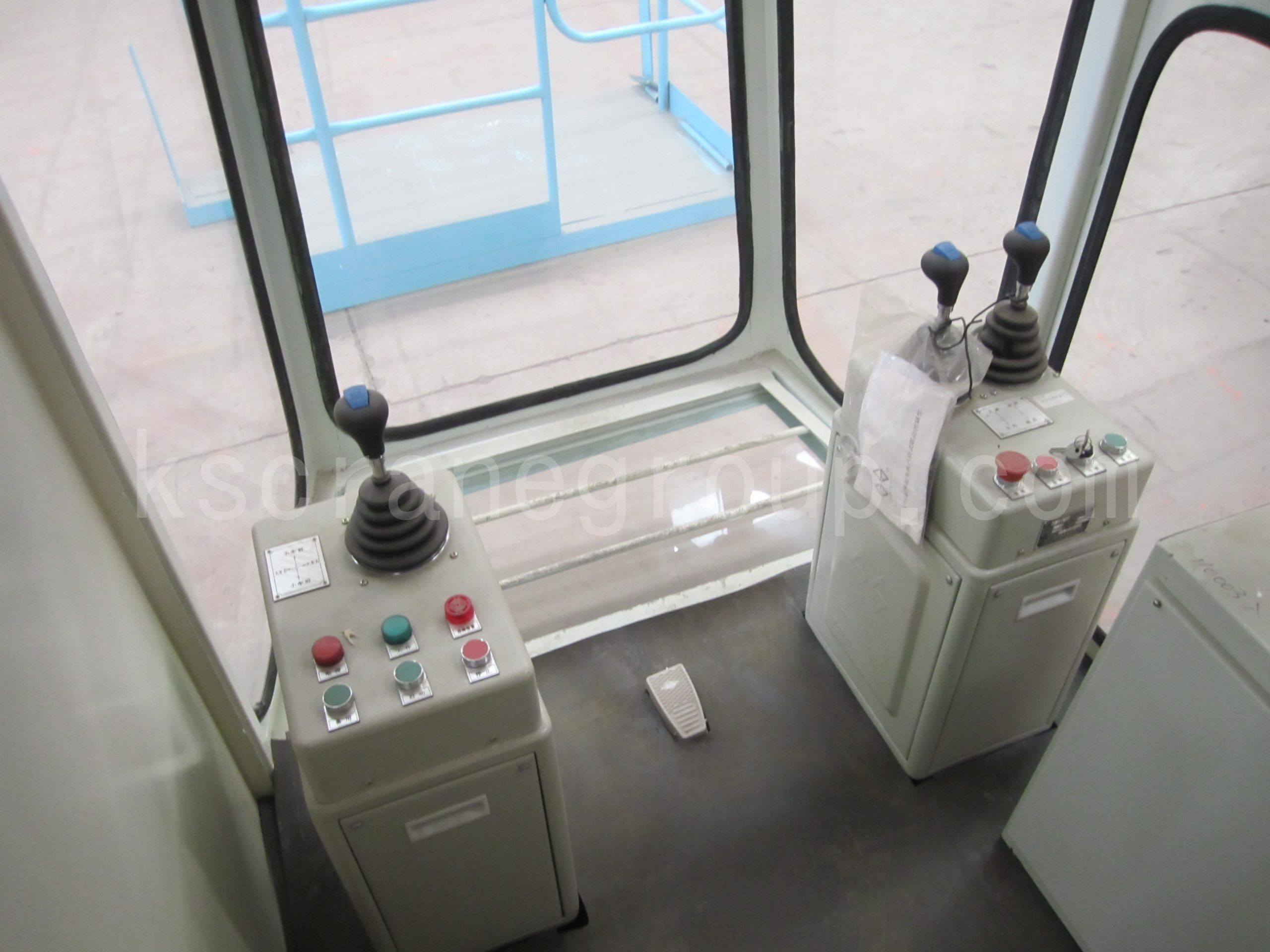
6. Unauthorized personnel are strictly prohibited from boarding the gantry crane.
7. It is strictly forbidden to throw objects from the gantry crane.
8. Before maintenance, the main power switch must be turned off, and a “No Switch On” warning sign must be posted.
9. When personnel are on the gantry crane, the operator is prohibited from closing the switch to start the crane. During maintenance, operators must follow the instructions of maintenance personnel.
10. The work area for the gantry crane must have adequate lighting and unobstructed lifting paths.
11. The gantry crane must be equipped with clear-sounding signal devices, such as horns or alarms.
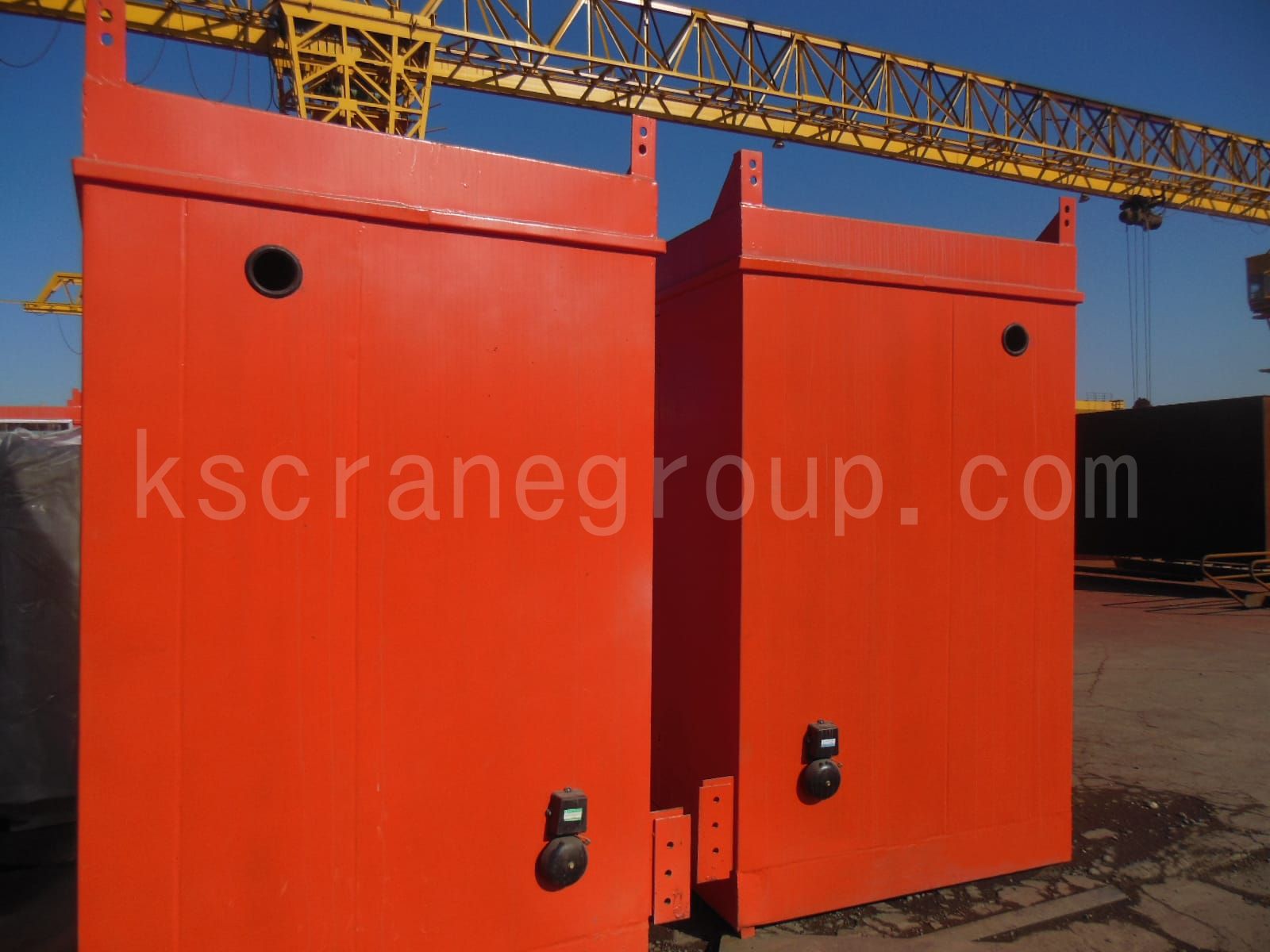
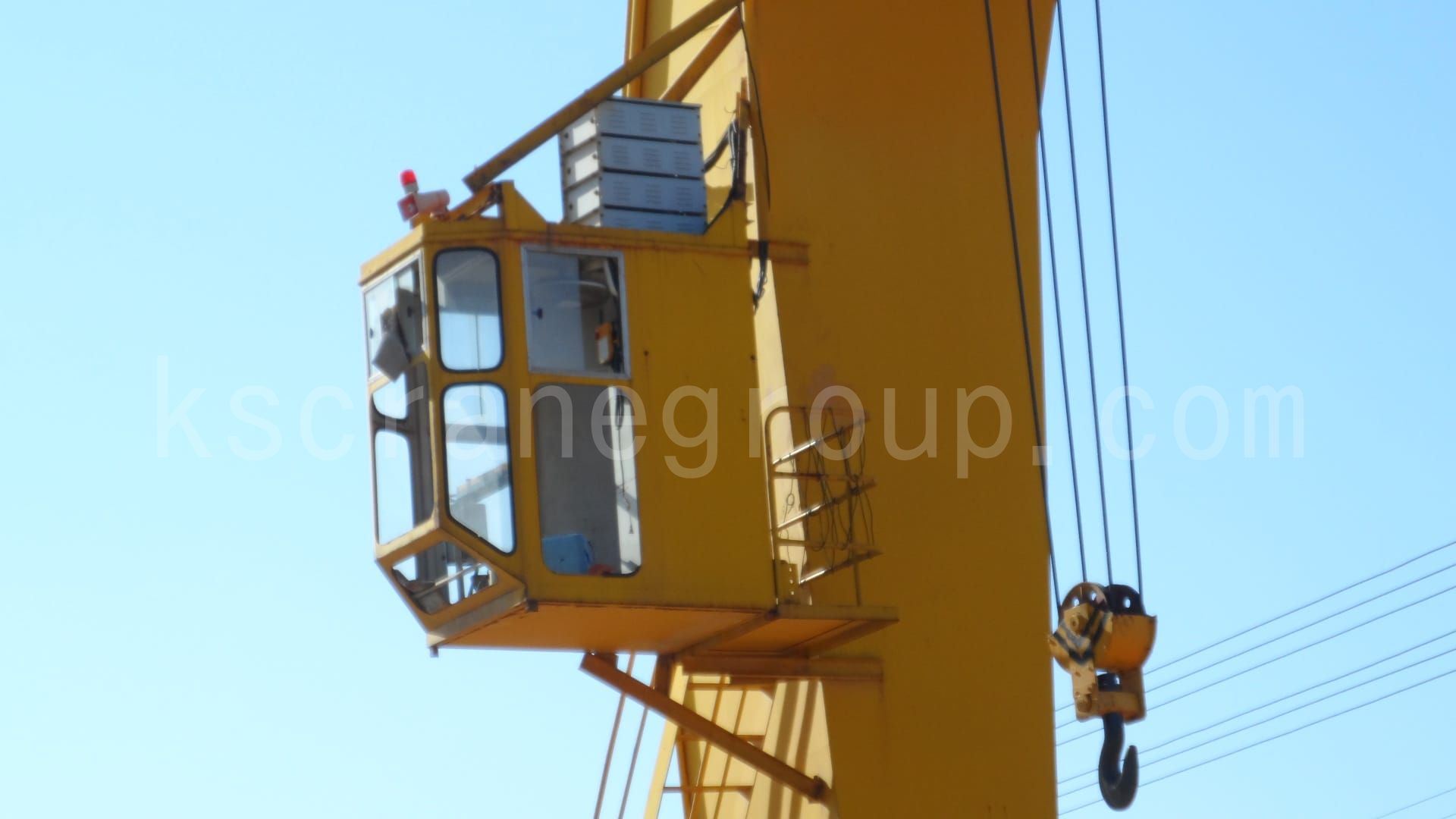
12. Electrical equipment for outdoor gantry cranes must have adequate rain protection.
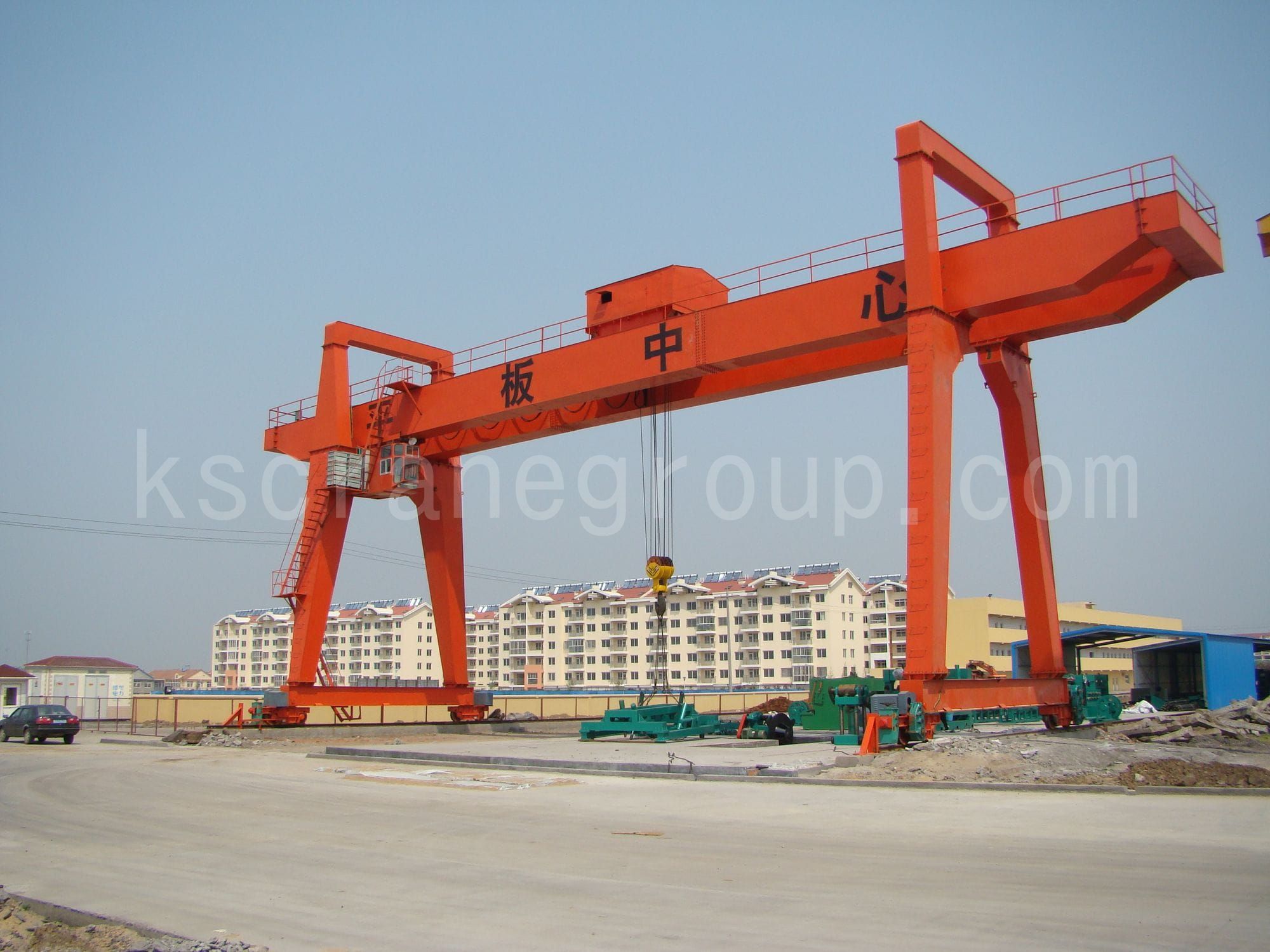
13. Ladders, platforms, and walkways on the gantry crane should have guardrails not less than 1 meter high, a width of no less than 600mm, and a guard board of no less than 150mm. A curved protective ring should be installed for straight or inclined ladders with an angle exceeding 75 degrees and a height exceeding 5m. For straight ladders over 10m, resting platforms with guardrails should be provided every 5–6m.
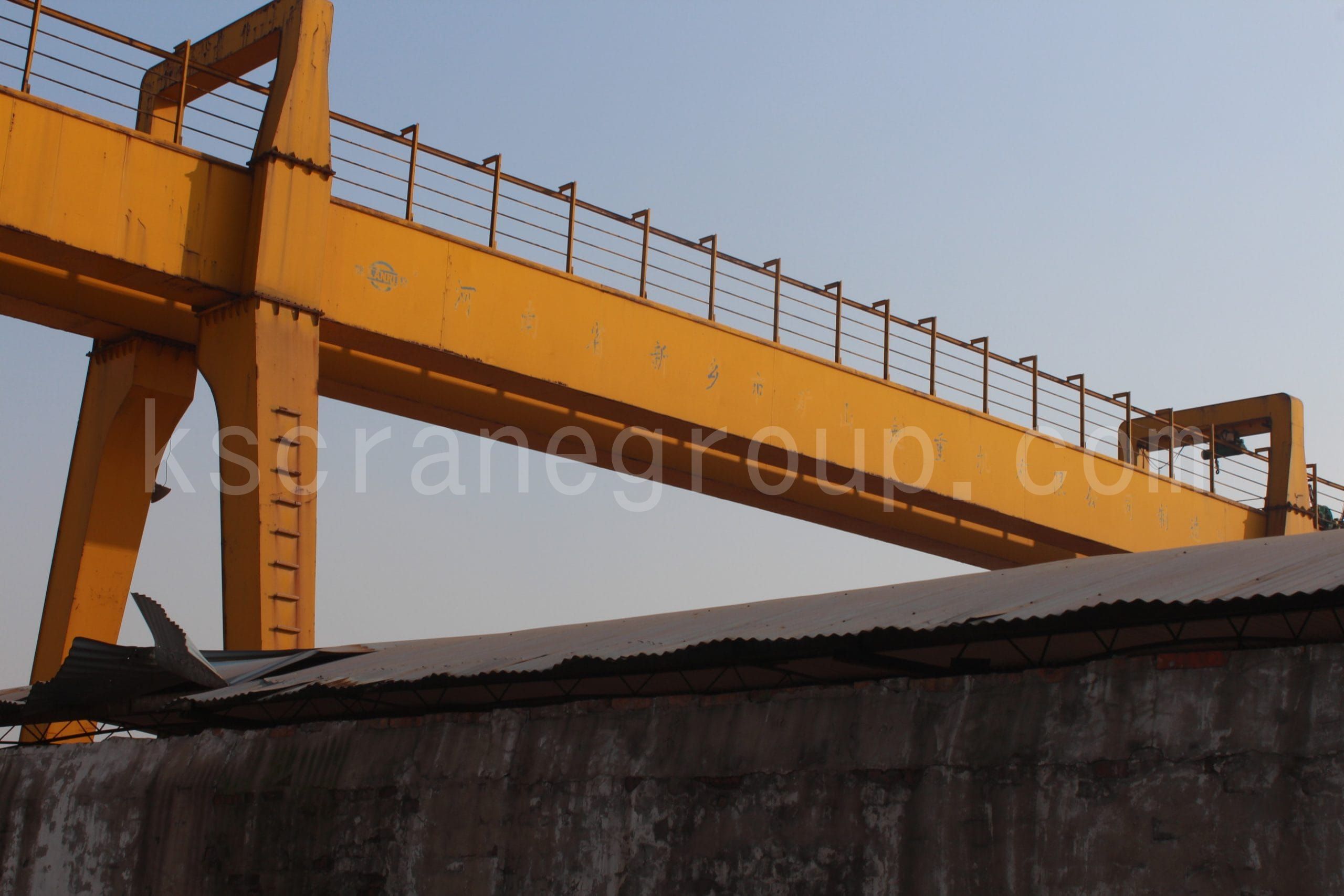
14. All live parts of the gantry crane must be reliably grounded to avoid accidental electric shock incidents. If the trolley track is not welded to the main beam, grounding should be done by welding. The trolley track and step-down transformer should be grounded according to the drawings on the low-voltage side. This grounding should be checked regularly.
Safety Checks Before Gantry Crane Operation
1. During shift handover, the outgoing operator should detail any issues from their shift to the incoming operator, who will then inspect the crane together. The main content and order of the inspection are:
- First, check that the main power switch on the distribution board is off; inspections must not be conducted while energized.
- Check the wire rope for broken strands and wear; observe if there are any grooves or overlapping issues on the drum, and ensure the fixed pressure plates are secure.
- The working springs, pins, connecting plates, and cotter pins of the brake should be intact, and the brake should not have any reverse jamming issues.
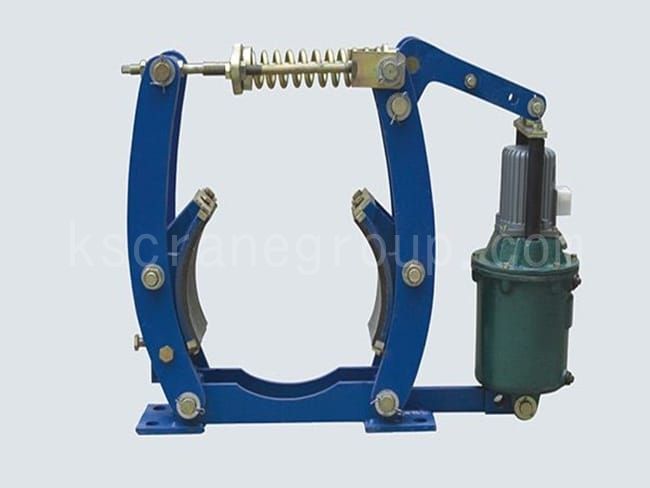
- All safety devices, brakes, and limit switches should operate sensitively and reliably.
- The center collector ring should rotate and have good contact; the cable reel should coordinate with the trolley’s movement speed.
- The hook should rotate freely, and the securing nut at the hook tail should not be loose.
2. Handover personnel should ensure the “Five Handovers” and “Three Checks” are completed.
Five Handovers:
- Handover production tasks, construction conditions, and quality requirements.
- Handover gantry crane operation and maintenance status.
- Handover random tools, oil, and parts consumption.
- Hand over accident hazards and fault handling.
- Handover safety measures and precautions.
Three Checks:
- Check the gantry crane operation and maintenance status.
- Check if the gantry crane operation records are accurate and complete.
- Check if the random tools are complete.
3. After necessary adjustments, repairs, and tests meet requirements, fill out the shift record. The handover is considered complete once the outgoing operator signs without objections.
4. Before starting gantry crane operation, check the power supply; the voltage should not be lower than 85% of the rated voltage.
5. No tools or other items should be left on the gantry crane to prevent falling objects during gantry crane operation.
6. Before starting, all control handles should be reset to zero position according to the operating procedures, and the hatch door and end beam door switches should be closed. After sounding the alarm, the operation can commence.
Safety Regulations and Techniques During Gantry Crane Operation
1. Sound the alarm before starting. The crane should start smoothly, accelerating gradually.
2. During the first lift of each shift, the load should be lifted 30 cm off the ground and then lowered to test the reliability of the brakes before proceeding with normal operations.
3. Strictly adhere to the “Ten No-Lift” rules:
- Do not lift if the signal is unclear.
- Do not lift if the weight is unknown.
- Do not lift if overloaded.
- Do not lift if there are people under heavy objects.
- Do not lift if the wire rope is not vertical.
- Do not lift in inadequate lighting at night.
- Do not lift if not securely bound.
- Do not lift buried objects.
- Do not lift explosives without safety measures or if they may damage the crane.
- Do not lift during heavy rain, fog, or winds over grade 7.
4. The operator should sound the alarm to signal:
- Lifting and lowering loads, and moving the trolley.
- When the gantry crane passes through areas with obstructed views, continuous sounding of the alarm is required.
- When the gantry crane is approaching nearby obstacles.
- When transporting loads near personnel.
- In other emergencies.
5. It is prohibited to use emergency switches, limit switches, or reverse operation to stop the gantry crane during operation.
6. Maintenance is prohibited while the gantry crane is in operation.
7. The gantry crane is not allowed to suspend loads in the air for extended periods. When the gantry crane is lifting, the operator and hook personnel are prohibited from leaving their posts.
8. When loading or unloading containers or other goods, attention should be paid to:
- Check that the packaging is secure and sturdy.
- The hook personnel should exit the compartment before lifting.
- When loading or unloading large steel plates or sharp-edged workpieces, use specialized clamps or tools. When lifting with wire ropes, always place cushioning material between the load and the wire rope.
9. In the event of a significant drop in voltage or power interruption, the main switch must be turned off, and all controllers must be set to zero.
10. Emergency measures for sudden brake failure of the lifting mechanism: Upon noticing brake failure, sound the warning signal, reverse the crane, and adjust the lifting controller to a suitable position. Repeatedly utilize this method to move the trolley to a safe location, and then lower the load. If the brake and the lifting mechanism fail simultaneously, immediately cut off the main switch in the operator’s cab to de-energize the brake electromagnet, engaging the brake.
11. Outdoor operations should cease when wind speeds exceed grade 7.
Post-Operation Procedures
1. Move the gantry crane to the designated location, maneuver the trolley to the end of the gantry crane, raise the hook, set all control handles to zero position and cut off the main power supply.
2. Clean and wipe down the gantry crane.
3. Lubricate and maintain according to regulations.
FAQ
How do you conduct daily inspections on the gantry crane?
Do you like what we do?Share it

















































